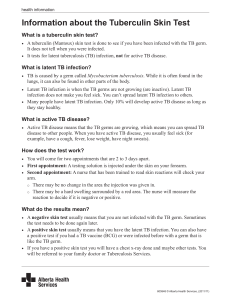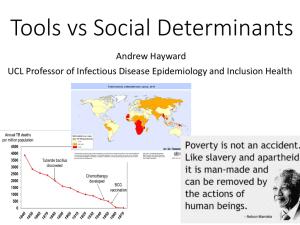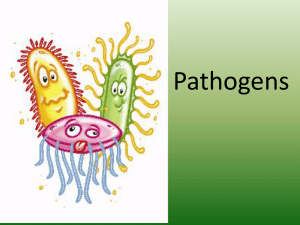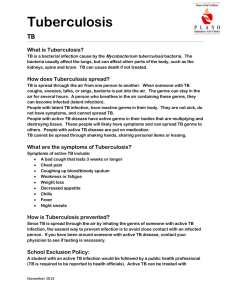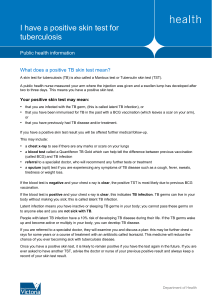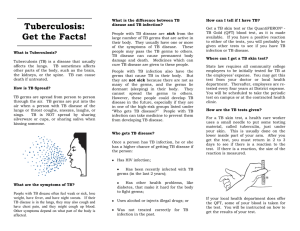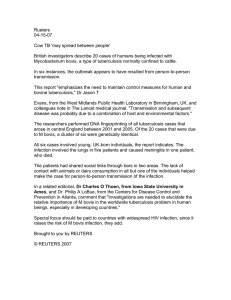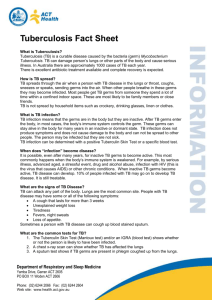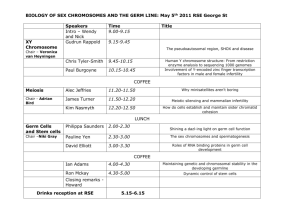Tuberculosis: Frequently Asked Questions
advertisement
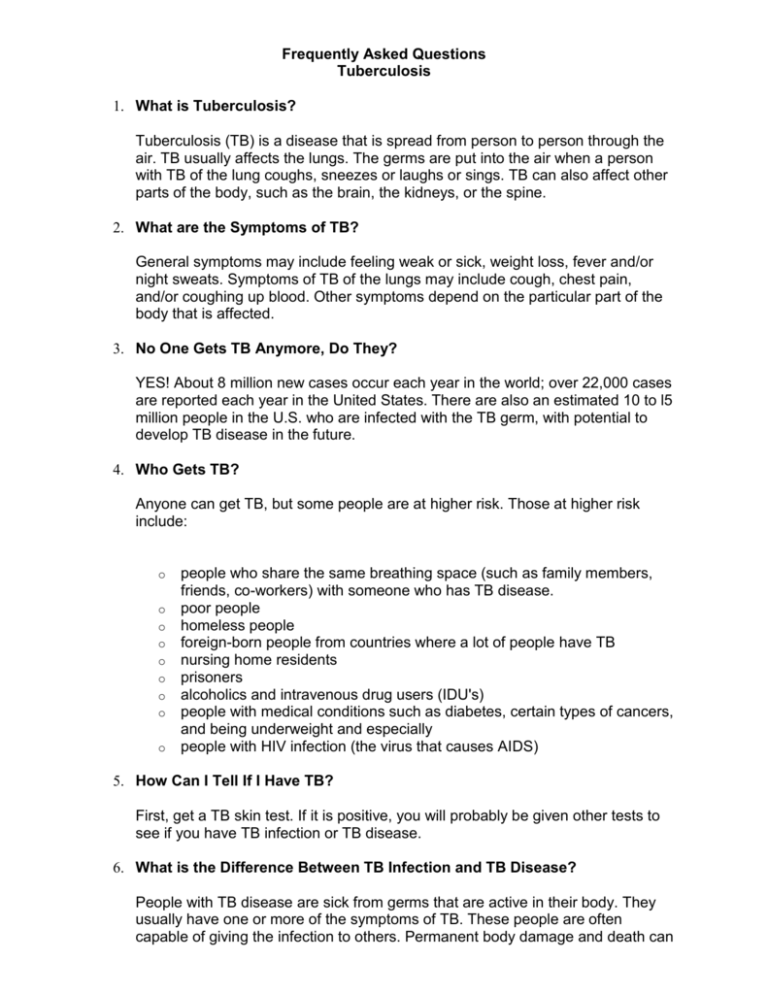
Frequently Asked Questions Tuberculosis 1. What is Tuberculosis? Tuberculosis (TB) is a disease that is spread from person to person through the air. TB usually affects the lungs. The germs are put into the air when a person with TB of the lung coughs, sneezes or laughs or sings. TB can also affect other parts of the body, such as the brain, the kidneys, or the spine. 2. What are the Symptoms of TB? General symptoms may include feeling weak or sick, weight loss, fever and/or night sweats. Symptoms of TB of the lungs may include cough, chest pain, and/or coughing up blood. Other symptoms depend on the particular part of the body that is affected. 3. No One Gets TB Anymore, Do They? YES! About 8 million new cases occur each year in the world; over 22,000 cases are reported each year in the United States. There are also an estimated 10 to l5 million people in the U.S. who are infected with the TB germ, with potential to develop TB disease in the future. 4. Who Gets TB? Anyone can get TB, but some people are at higher risk. Those at higher risk include: o o o o o o o o o people who share the same breathing space (such as family members, friends, co-workers) with someone who has TB disease. poor people homeless people foreign-born people from countries where a lot of people have TB nursing home residents prisoners alcoholics and intravenous drug users (IDU's) people with medical conditions such as diabetes, certain types of cancers, and being underweight and especially people with HIV infection (the virus that causes AIDS) 5. How Can I Tell If I Have TB? First, get a TB skin test. If it is positive, you will probably be given other tests to see if you have TB infection or TB disease. 6. What is the Difference Between TB Infection and TB Disease? People with TB disease are sick from germs that are active in their body. They usually have one or more of the symptoms of TB. These people are often capable of giving the infection to others. Permanent body damage and death can result from this disease. Medicines which can cure TB are prescribed for these people. People with TB infection (without disease) have the germ that causes TB in their body. They are not sick because the germ lies inactive in their body. They cannot spread the germ to others. However, these people may develop TB disease in the future, especially if they are in one of the high risk groups listed under "Who gets TB?" Medicine is often prescribed for these people to prevent them from developing TB disease. 7. Where Can I Get a TB Skin Test? You can get a TB skin test from your doctor or local health department. 8. How is the Skin Test Given? A small needle is used to put some testing material, called tuberculin, just under the skin. This is usually done on the inside of the arm. The person getting the test must return in 48 to 72 hours to see if there is a reaction to the test. If there is a reaction, the size of the reaction is measured. 9. What If the Test is Negative? A negative test usually means the person is not infected. However, the test may be falsely negative in a person who has been recently infected. It usually takes 2 to 10 weeks after exposure to a person with TB disease for the skin test to react positive. The test may also be falsely negative if the person's immune system is not working properly. 10. What If the Test is Positive? A positive reaction usually means that the person has been infected with the TB germ. It does not necessarily mean that the person has TB disease. Other tests, such as an x-ray or sputum sample, are needed to see if the person has TB disease. 11. What Should I Do If I Have TB Infection Or Disease? Get required follow up tests. Follow your doctor's advice and take the medicine as prescribed. Today, TB is easily prevented and cured with medication. INFORMATION SOURCE: Centers for Disease Control and Prevention National Center for Prevention Services Division of Tuberculosis Elimination Atlanta, Georgia 30333
